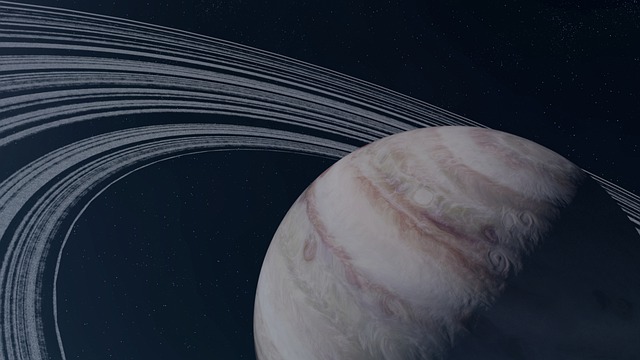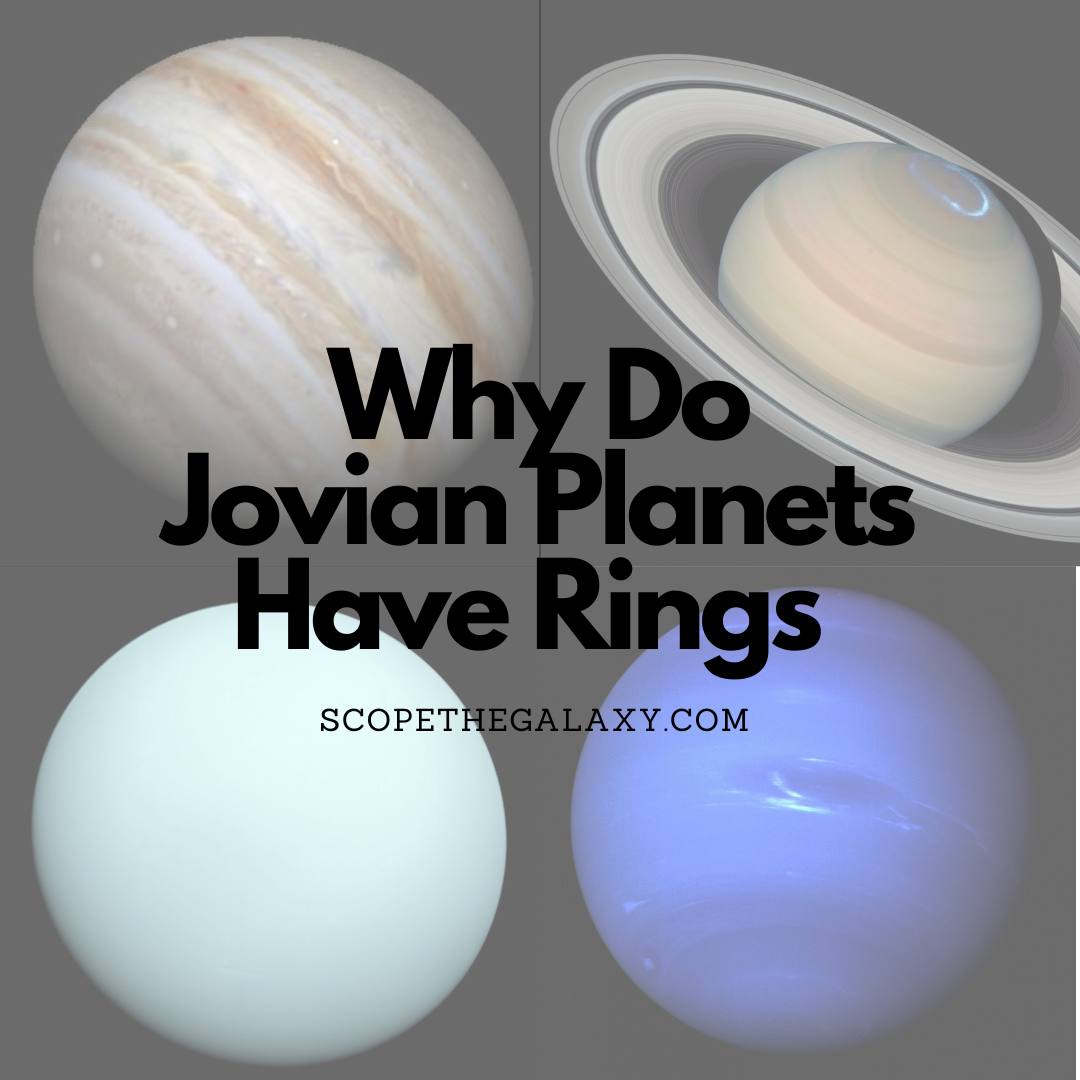*This post may contain affiliate links. This means we may make a commission if you purchase an item using one of our links*
The Jovian planets are comprised of four planets, all gas giants, and all with a far higher gravitational force than that of Earth. Outside of their gigantic size, the Jovian planets are also known for their many moons, along with their rings; none more breathtaking and visible than the rings of Saturn.
Jovian Planets all have rings due to their immense gravitational forces being capable of drawing in moons, ice, and rocks in space. Many of these objects collide with each other, creating dust, aggregate, and massive chunks of rock that continue to circle their respective planets on the same plane.
It wasn’t until more modern times that anyone even knew the other gas giants (aside from Saturn) had rings. While Saturn’s rings are clearly visible in even the weakest of telescopes and binoculars, that’s not the case for Jupiter, Neptune, and Uranus.
With the exception of Saturn, the rings on the Jovian planets are very thin but definitely there. Although the debris from these rings is closer to their respective planets than moons, they aren’t sucked into the planets because all four planets have an immense rotational speed, essentially slinging them back.
How Did The Jovian Planets Get Rings?
Table of Contents
As far as Jupiter, Neptune, and Uranus are concerned, there is no factual information concerning how they obtained their rings. The assumption is, balanced by strong evidence, that the rings of these three planets exist because of orbital impacts from moons and asteroids.
After spending eons smashing into each other, they formed enough debris to constitute what we call “rings” today. Saturn’s rings arose from a similar destructive scenario, only with Saturn, the colliding, astral bodies were far more immense.
It doesn’t take much to formulate some sort of ring that permanently orbits a planetary body. For instance, if satellites and other orbital debris continue to increase, Earth will eventually have its own ring, albeit consisting of far more man-made trash than anything from space.
What Are The Rings Around A Planet Made Of?

Primarily rocks and ice. However, not all four Jovian planets are alike in the materials that orbit them. Saturn’s rings certainly consist of a few rocks, however, it’s primarily ice that comprises Saturn’s rings.
Whenever you watch or read science fiction, in scenarios where humans have populated the stars, Saturn is always the popular option for “ice hauling” to bring water to outer and inner planets.
Jupiter’s ring is primarily dust from colliding asteroids and possibly, some tiny moons somewhere in the planet’s past. Uranus and Neptunes ring material is largely unknown, although it is expected that they are mostly made up of dark ice or carbon.
The idea is perpetuated by scientists who have observed that both Neptune and Uranus have very dark rings.
Why Do Jovian Planets Have Rings And Terrestrial Planets Don’t?
The inner planets, Mercury, Venus, Earth, and Mars, don’t have rings simply because they are too close to the sun. The competing gravitational forces are no contest against the sun, which simply pulls all of the tiny debris and dust away from these planets and to itself.
Also, the smaller, inner planets lack the gravitational force necessary to grab these space articles and hold them. In Earth’s case, as mentioned above, there is a sort of ring system forming that is primarily comprised of space junk from man-made objects.
However, these are in the earth’s inner orbit and most of their orbits will eventually decay to the point where the earth’s gravity will finally pull them out of the sky. So long as we continue to launch objects into space, however, we will continue to have this very loose, man-made ring.
Its also worth noting that it is a testament to the vastness of space that human beings can travel to and work in space, remaining in Earth’s orbit (not to mention all of the satellites we launch every year), without getting struck by our own objects.
Do All Jovian Planets Have Rings?
All of the Jovian planets have rings without exception. While Saturn reigns supreme as the everlasting, “ring” planet that millions of adults and children have been able to gape at through home telescopes, the other planets have them as well.
It’s nearly impossible to see the rings of Neptune and Uranus, even with some of the most powerful consumer telescopes on the market, however, with a seriously premium telescope, you can make out Jupiter’s rings at certain times of the year.
One of the most interesting aspects of Jupiter is not even its rings, it’s all of the moons that constantly orbit the solar system’s largest planet. It’s almost as if Jupiter has rings entirely comprised of moons.
Jupiter has 79 known moons, with only 53 of them currently named. The four most prominent moons are Io, Ganymede, Callisto, and Europa. All four are easy to spot and usually arrayed in a ringlike perspective when viewed through the telescope.
When viewing Saturn through a telescope, the rings rival the planet, looking much larger than the planetary body at their center. The rings are so large in fact, that you can view them with a standard set of binoculars on some nights throughout the year.
Final Thoughts
All of the Jovian planets happen to have rings. It’s not something that is generally even known unless everyone sits down and thinks hard about their high school science classes.
Unfortunately, Saturn’s is the only one that is easy to see, with specialized instruments required for Neptune and Uranus or a high-end telescope to detect Jupiter’s.
References
What Are They, and Where Are They?
Retrieved from: https://lasp.colorado.edu/outerplanets/giantplanets_whatandwhere.php
(December 21, 2021). why don t terrestrial planets have rings?
Retrieved from: https://lisbdnet.com/why-don-t-terrestrial-planets-have-rings/


